- About MAA
- Membership
- MAA Publications
- Periodicals
- Blogs
- MAA Book Series
- MAA Press (an imprint of the AMS)
- MAA Notes
- MAA Reviews
- Mathematical Communication
- Information for Libraries
- Author Resources
- Advertise with MAA
- Meetings
- Competitions
- Programs
- Communities
- MAA Sections
- SIGMAA
- MAA Connect
- Students
- MAA Awards
- Awards Booklets
- Writing Awards
- Teaching Awards
- Service Awards
- Research Awards
- Lecture Awards
- Putnam Competition Individual and Team Winners
- D. E. Shaw Group AMC 8 Awards & Certificates
- Maryam Mirzakhani AMC 10 A Awards & Certificates
- Two Sigma AMC 10 B Awards & Certificates
- Jane Street AMC 12 A Awards & Certificates
- Akamai AMC 12 B Awards & Certificates
- High School Teachers
- News
You are here
Mathematical Treasure: Luca Pacioli’s Euclid’s Elements
The Italian mathematician Luca Pacioli, who is known for publishing an influential compendium of 15th-century mathematics, titled Sūma de Arithmetica Geometria Proportioni & Proportionalita, and a book illustrated by Leonardo da Vinci, titled Divina Proportione, also published a Latin translation of Euclid’s Elements (Linda Hall Library call number QA31.E857 1509) in 1509. Below is the title page.
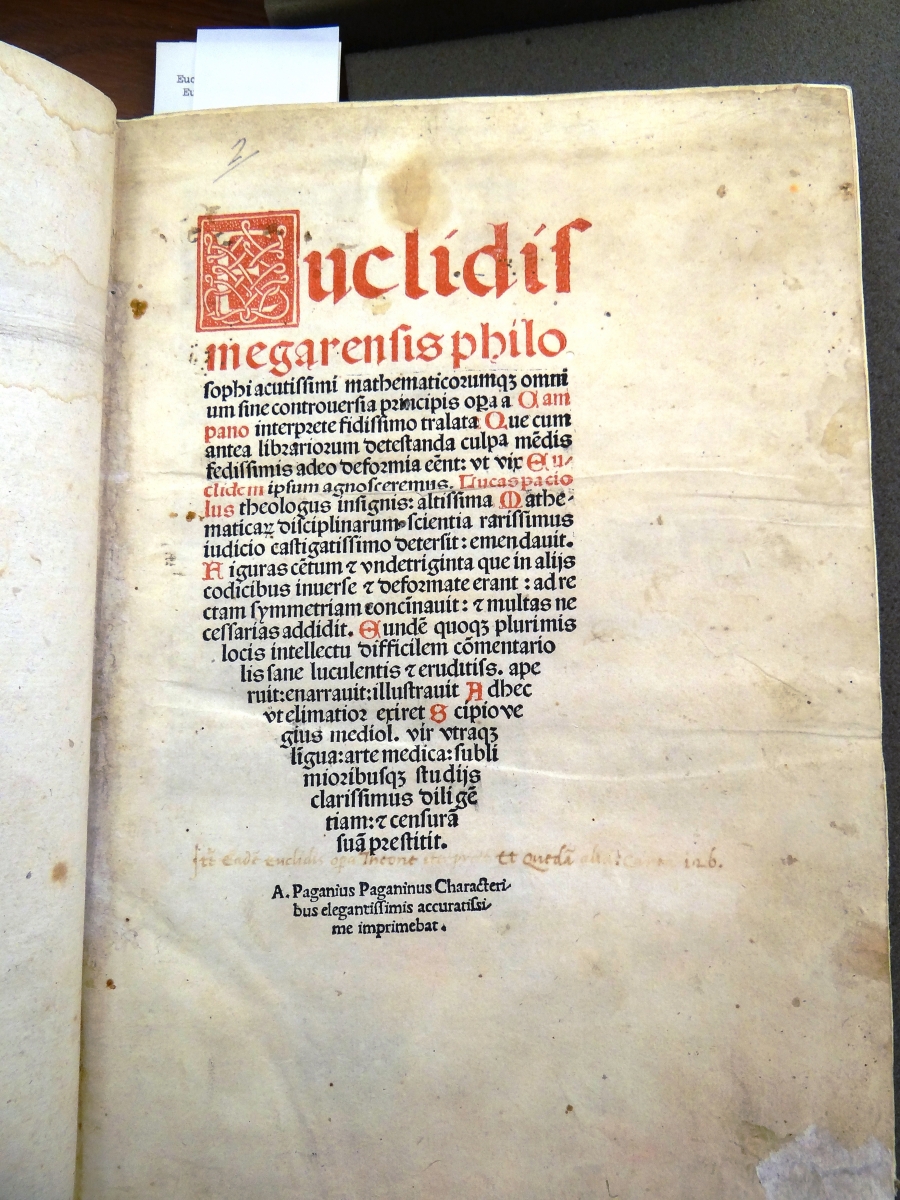
Notice that the title mentions Euclid of Megara. During the European Middle Ages Euclid of Alexandria (ca 325 BC–ca 265 BC) was often confused with the Greek philosopher Euclid of Megara (ca 435 BC–ca 365 BC).
The name of Campanus is also mentioned on the title page (end of 4th line to start of 5th line). This edition of Euclid’s Elements is based on Johannes Campanus’ earlier (around 1260) Latin translation, with annotations added by Pacioli. There are sections in the work labeled “Verba Campani” or “The Words of Campanus,” as in the image below.
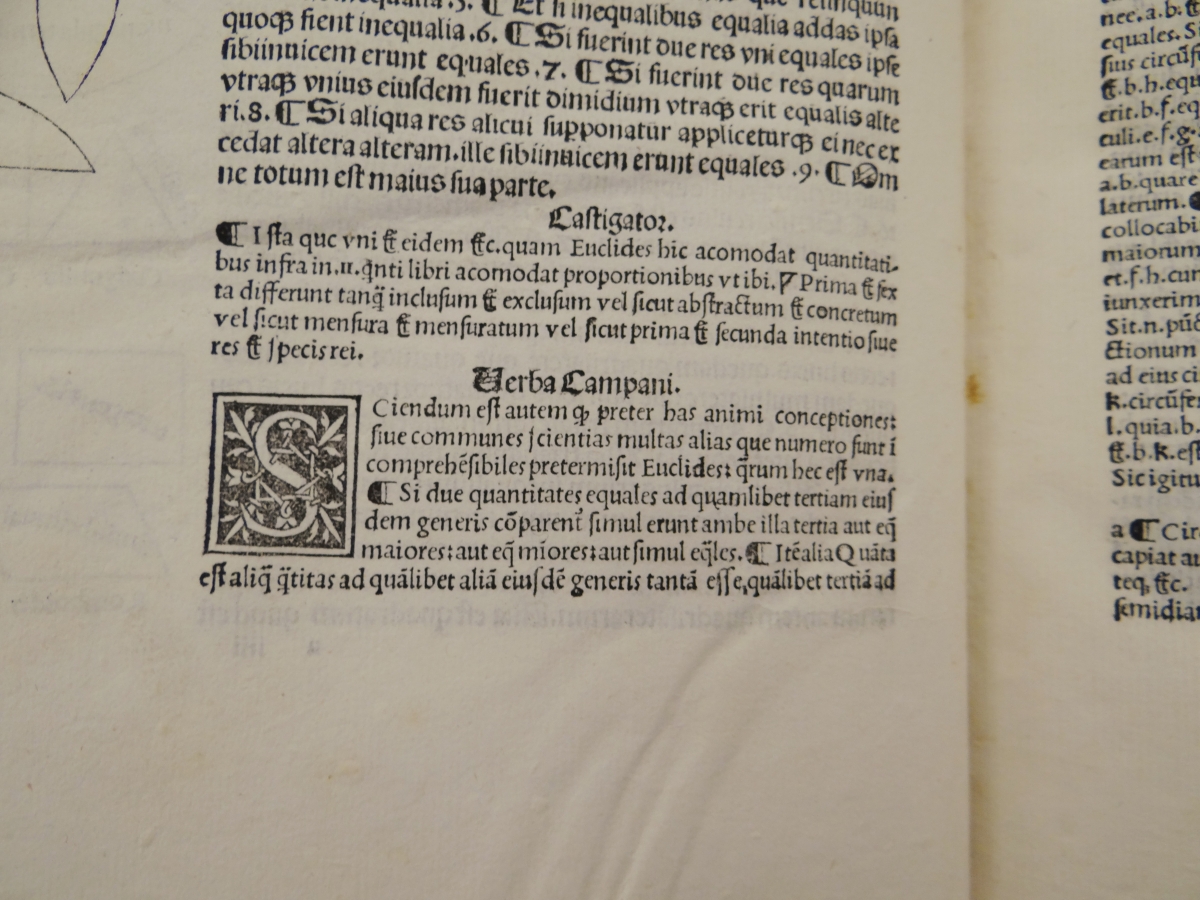
Like the translation by Campanus, which was the standard for over 200 years, Pacioli’s version of Euclid contains 15 books. The picture below shows the end of Book 14 (decimusquartus) and the start of Book 15 (decimusquintus).
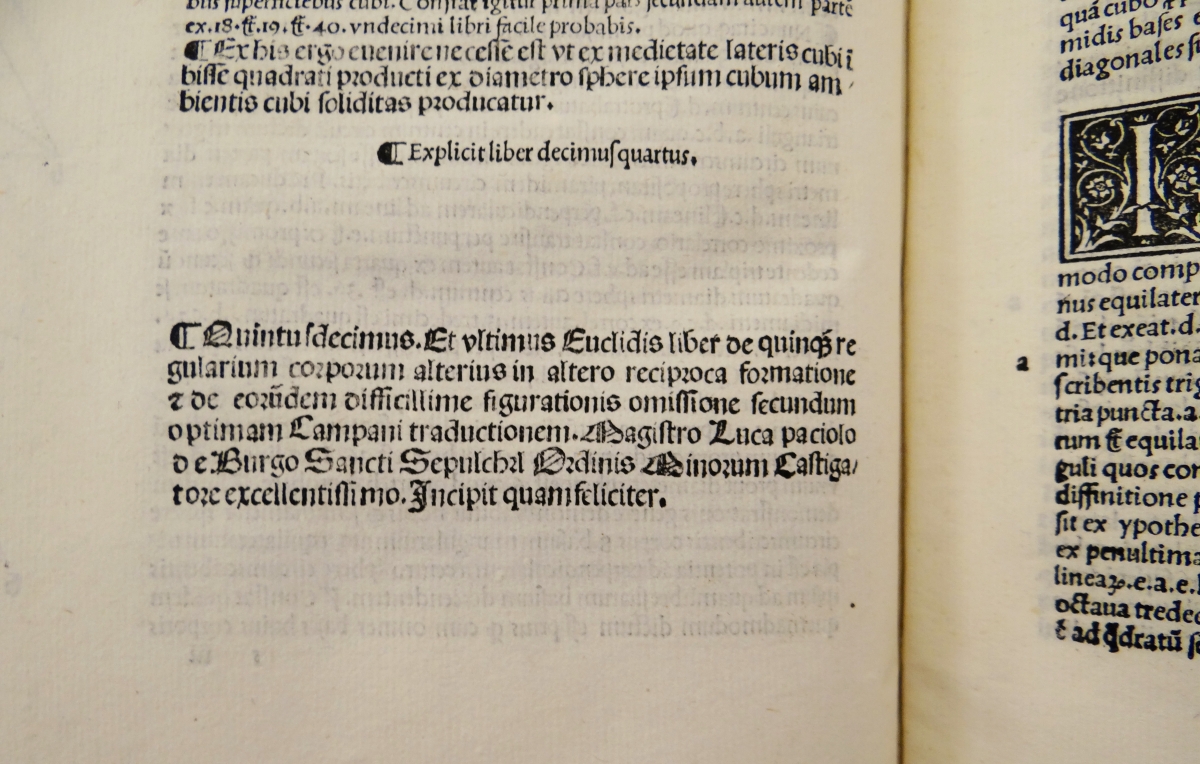
The next image is of the definitions on the first page of Book 1.
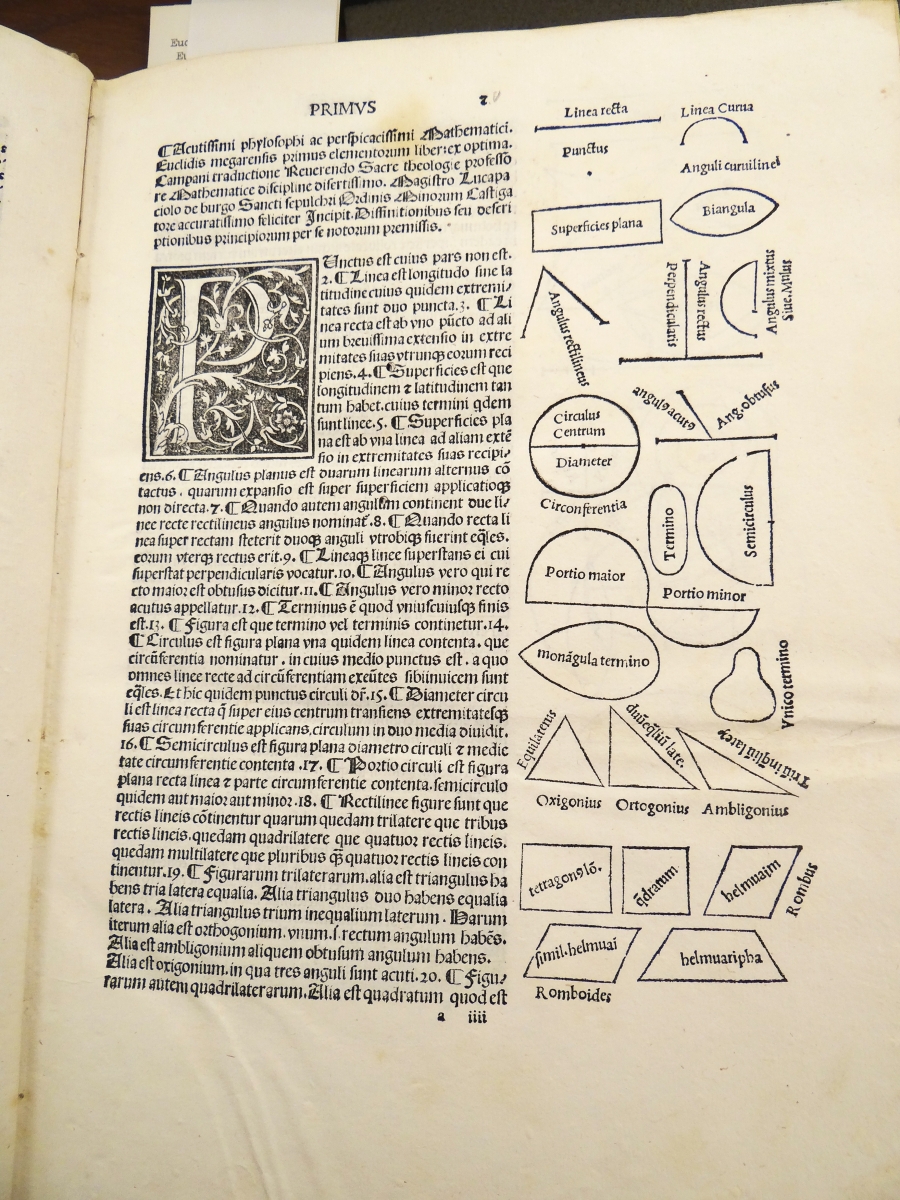
This page shows two figures (the top two) to accompany the Pythagorean Theorem, Proposition 46.
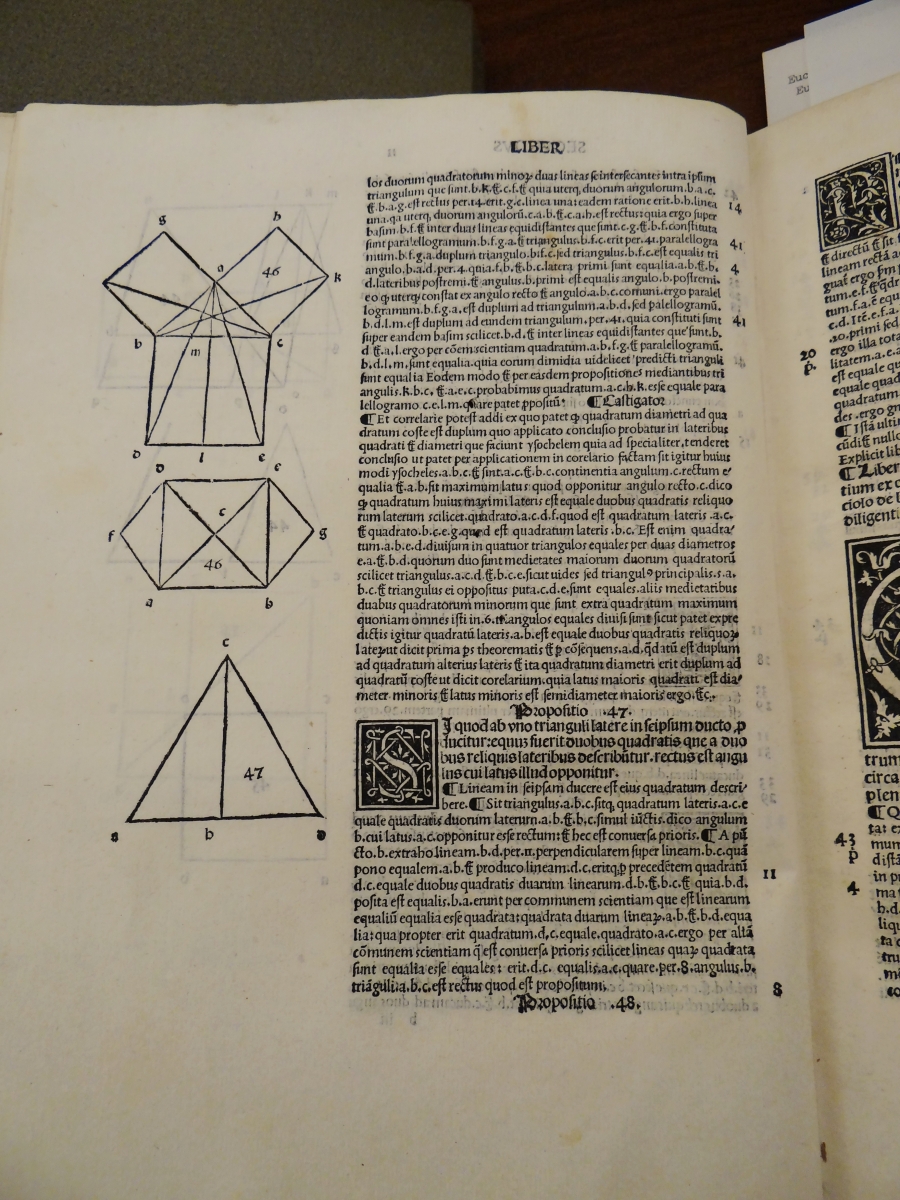
The copy of the book at the Linda Hall Library was at one time in the library of a member of the well-known Florentine family Strozzi. Below is the page with the ownership written at the top and the family coat of arms at the bottom of the page, followed by a close-up of the coat of arms.


For more images of Pacioli’s Elements, visit the page “Mathematical Treasure: Pacioli's Elements of Euclid” by Frank J. Swetz in Convergence.
A complete digital scan is available in the Linda Hall Library Digital Collections.
Images in this article were taken by the author at the Linda Hall Library of Science, Engineering & Technology and are used with permission. The Linda Hall Library makes available all existing digital images from its collection that are in the public domain to be used for any purpose under the terms of a Creative Commons License CC by 4.0. The Library’s preferred credit line for all use is: “Courtesy of The Linda Hall Library of Science, Engineering & Technology.”
References
O'Connor, J. J., and E. F. Robertson. “Campanus of Novara.” MacTutor History of Mathematics archive. https://mathshistory.st-andrews.ac.uk/Biographies/Campanus/.
O'Connor, J. J., and E. F. Robertson. “Euclid of Alexandria.” MacTutor History of Mathematics archive. https://mathshistory.st-andrews.ac.uk/Biographies/Euclid/.
O'Connor, J. J., and E. F. Robertson. “Luca Pacioli.” MacTutor History of Mathematics archive. https://mathshistory.st-andrews.ac.uk/Biographies/Pacioli/.
“Euclid of Megara.” Wikipedia. https://en.wikipedia.org/wiki/Euclid_of_Megara.
“Strozzi family.” Wikipedia. https://en.wikipedia.org/wiki/Strozzi_family.
Cynthia J. Huffman (Pittsburg State University), "Mathematical Treasure: Luca Pacioli’s Euclid’s Elements," Convergence (January 2017)




